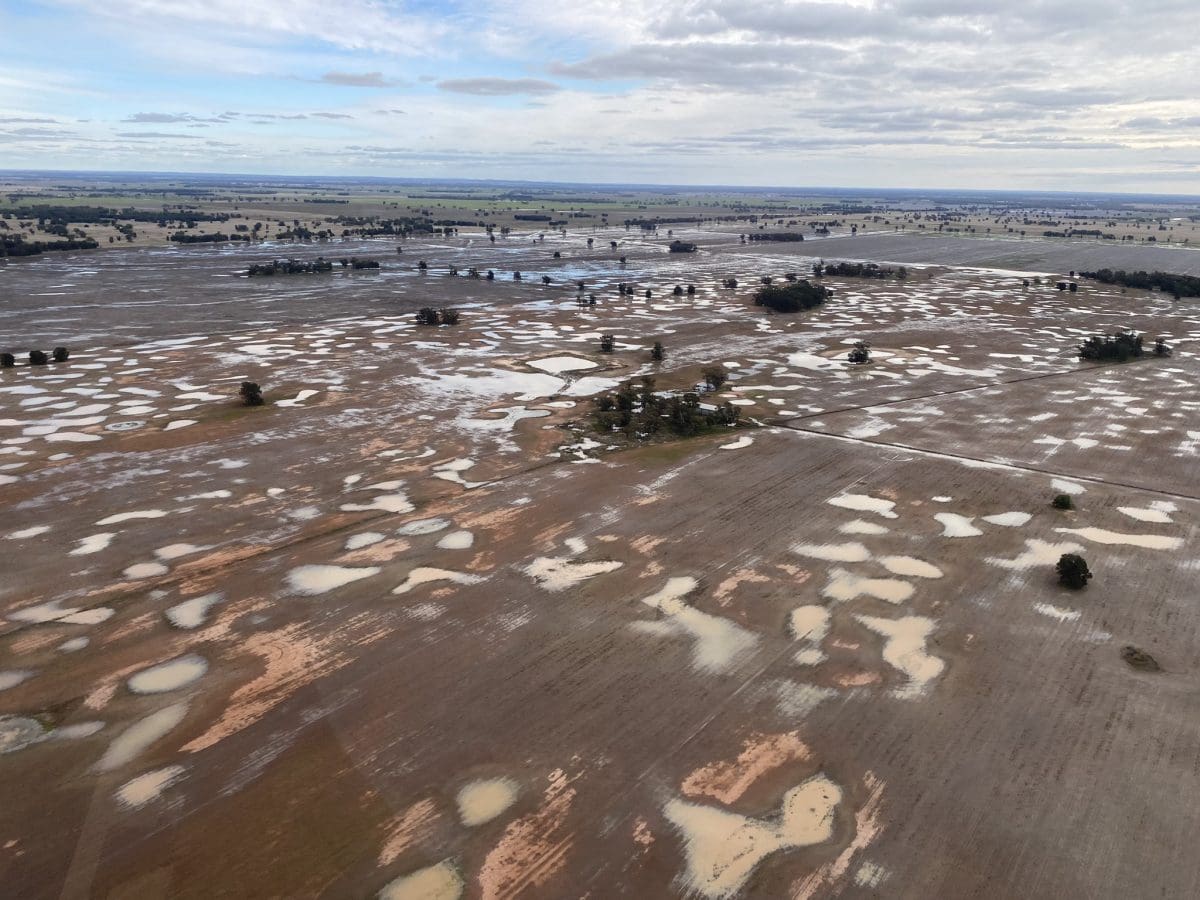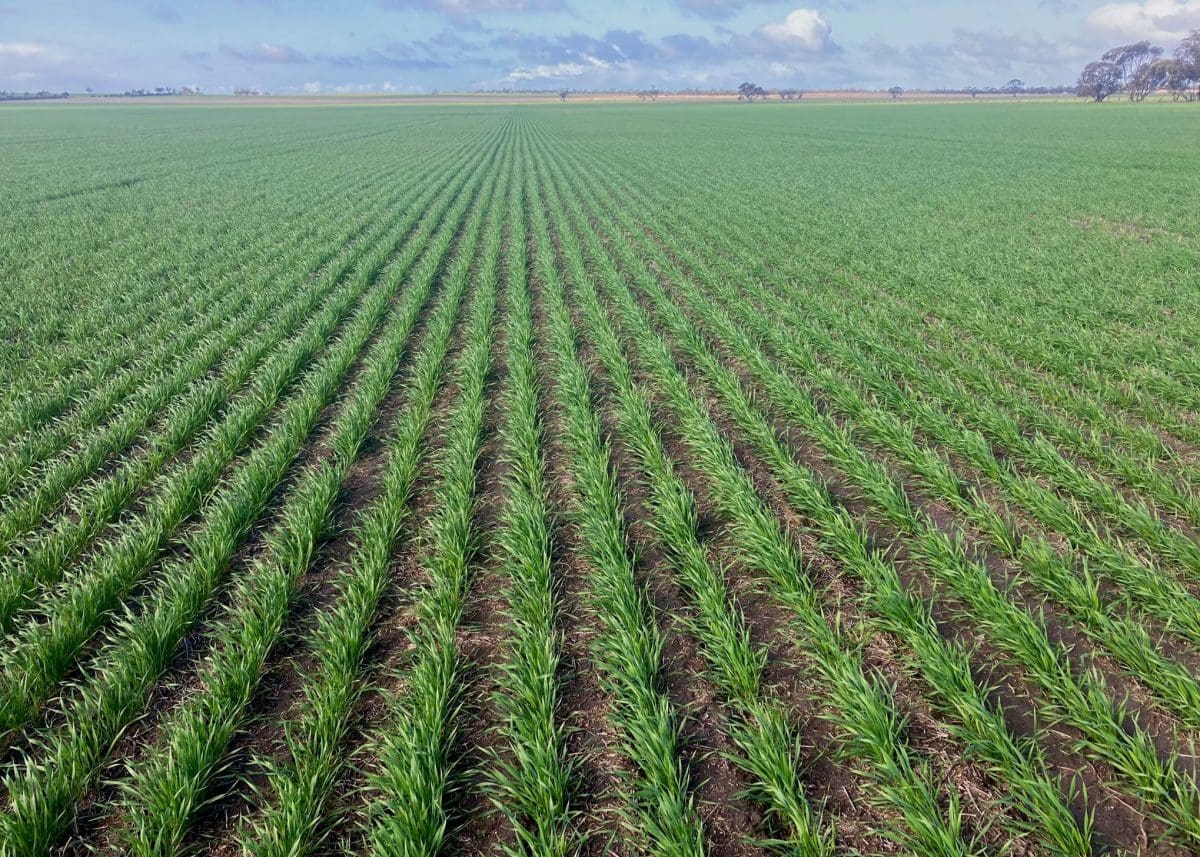
Tomingley in central NSW is one of many parts of the state that has had 10-40mm of rain in the past week to further delay the completion of winter-crop planting. Photo: Dale Foster, NDF, Narromine
WET conditions in northern New South Wales and southern Queensland are holding up completion of Australia’s 2022-23 winter-crop planting program.
Many growers in the wet areas are only around 20 per cent planted, while most growers in South Australia, Victoria, Western Australia and the southern third of NSW have finished or nearly finished planting.
Apart from the waterlogged areas of Queensland and NSW, crops are off to an ideal start.
Ahead of ABARES quarterly Australian Crop Report to be released on Tuesday, industry analysts are saying Australia looks set to produce its third consecutive bumper winter crop.
However, rain delays in NSW and Queensland mean the 2022-23 crop is highly unlikely to break the records set in 2021-22 which ABARES puts at 36.3 million tonnes (Mt) for wheat, 13.7Mt for barley, and 6.4Mt for canola.
In its Winter Crop Outlook released on Tuesday, Rabobank forecast Australia’s 2022-23 wheat area at 13.6 million hectares (Mha), with barley at 4.1Mha and canola at 3.6Mha.
Australian Crop Forecasters (ACF) is more conservative on wheat and canola areas at 13.1Mha and 3.1Mha respectively, but at 4.3Mha is going bigger on barley.
Based on current plantings and slightly above-average yield expectations, Rabobank estimates Australia will be on track to deliver total wheat production of 32.5Mt, while ACF is sitting on 29.1Mt.
There is little to split the Rabobank and ACF new-crop estimates for barley of 11Mt and 10.6Mt respectively; on canola, Rabobank is on 5.8Mt, well above ACF’s 5Mt.
North slow and struggling
In Queensland and northern NSW, rain which started in April has continued through May and, while growers have been able to make some progress between rain events, progress for most has been slow and fitful.
Many are either reducing their ideas about how much winter crop to plant, replanting some area due to waterlogging, or both.
AgForce Grains president Brendan Taylor is a grower at Warra on Queensland’s Western Downs, and is one of the region’s growers to only have around one-quarter of intended area planted to date.
“Crops here were planted late April, and they’re struggling because it’s too wet; they need sun and oxygen.
“It’s up well, and it’s a lovely shade of off yellowy green; it’s waterlogged.”
In Central Queensland (CQ), rain has generally been lighter and patchier, and most growers are well past halfway on their winter-crop planting programs,
“CQ is going; it’s quite wet up there, but it’s not as wet as here.”
Mr Taylor’s farm north-west of Dalby has received roughly 400 millimetres of rain in the past five months, which is well above average.
“In the past six weeks, we have had more rain and not much sun, and everything’s saturated.”
“With cool, short days, things are slow to dry out.”
“There has been a reasonable area planted in areas out west, and a fair bit needs to be replanted.”
“We’re not out of the planting window yet, but we’re well and truly halfway through.”
Delta Ag broker Tom Vanzella said while conditions were wet in CQ, winter crop was going into the ground as a priority over harvesting sorghum.
“I was up there two weeks ago, and they were trying to mud a bit in.
“Their priority is planting mainly wheat, and some barley…and then they’ll get back into sorghum.”
On the Liverpool Plains of northern NSW, agronomist Jim Hunt said growers were still trying to pick cotton and harvest sorghum amid rain events, and winter-crop sowing was running “very late”.
“I don’t think we’d have 50pc in.
“People got most of their canola in, and they’re still resowing patches.”
With the growing season shortened by the delayed planting, Mr Hunt said growers were now trying to find shorter-season varieties of wheat to plant.
“People will persist with the wheat, and they will put some durum in for sure.
“There’s not a lot of interest in barley, but it may turn into a bit of interest if it gets too late to plant wheat.
“With the price of wheat, we’ll break a few rules.”
Mostly rosy in south, west
In Victoria, Western Ag director Philip Hawker said earlier this week that sowing was almost complete.
“It’s been a drier start but we’ve had good rain, and in the Wimmera, we have good subsoil moisture,” Mr Hawker said.
“We’ve been able to sow under dry conditions, and getting follow-up consolidating rain has been ideal for crop establishment.”
“There might be the odd late barley crop or field peas going in, but if sowing’s completed in May, that’s perfect.”

This crop of Rockstar wheat was sown April 23 in Victoria’s Wimmera region and, like most crops in the state, is off to a strong and early start. Photo: Matt Rohde
Almost all of Victoria’s grain-growing regions have made more than 100mm of rain in the past three months, and crops are seen as having above-average yield potential.
In South Australia, the break came later than in other states, but falls of 10-50mm in the past week over most of its growing areas have given dry-sown crops the moisture they need.
Grain Producers SA chair and Hamley Bridge grower Adrian McCabe said most of the state’s growers have finished planting, and those that have not only had 5-10pc left to go this week to finish.
“We’ve planted in the back end of the ideal window.
“Some crops struggled up, and this latest rain will get them up and roaring.”
In Western Australia, Kulin-based ConsultAg agronomist Ben Whisson said the typically lower-rainfall areas in the state’s east have had a strong and early start, while some of the higher-rainfall districts like Narrogin missed the early rain.
“Nearly all the crops have come up well, but some are a bit of patchy,” Mr Whisson said.
“Eastern crops are all looking fantastic; a lot of growers have May 25 as their target finish date, and they’d have been done on close to that.”
All WA grain-growing areas have had at least 50mm of rain since March 1, and some have had more than 100mm, which has been ideal to rebuild subsoil moisture after a very hot and dry summer.
Grain Central: Get our free news straight to your inbox – Click here



HAVE YOUR SAY